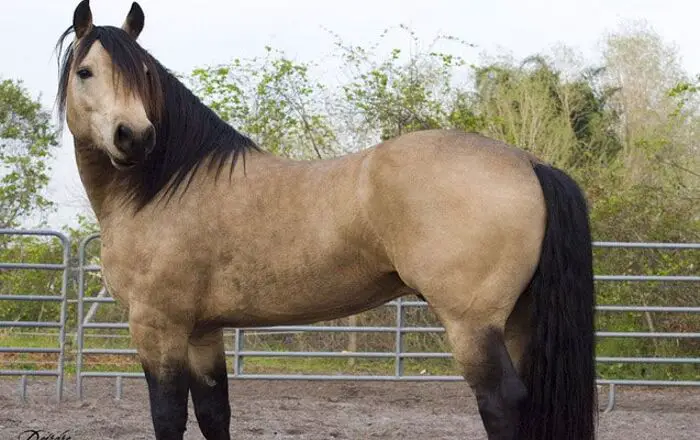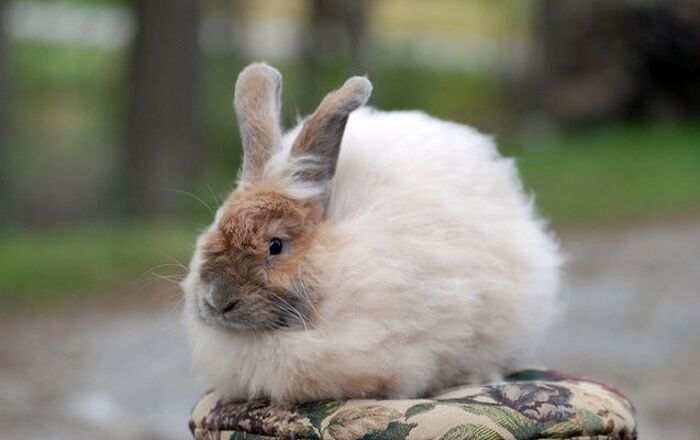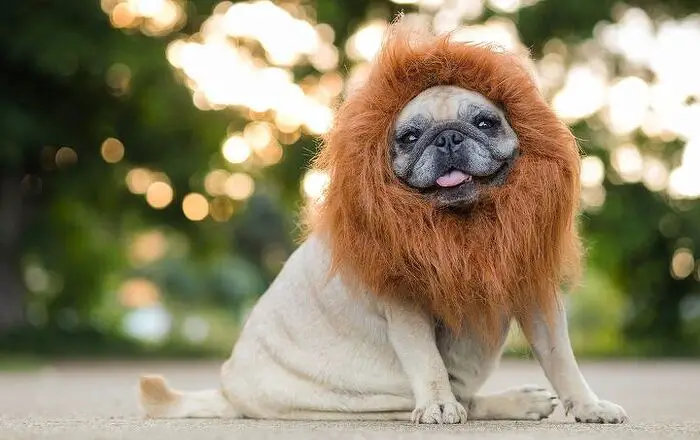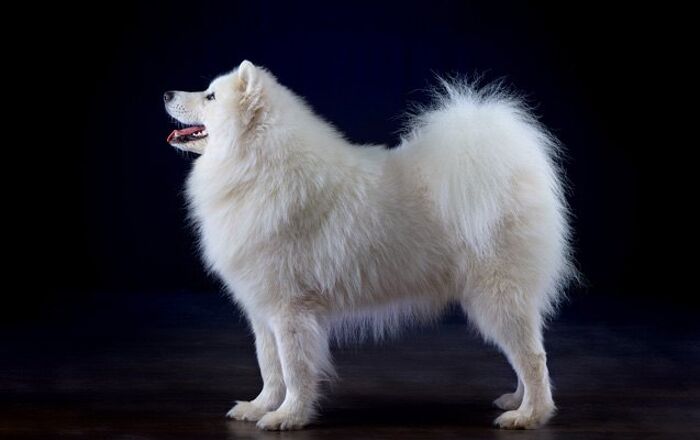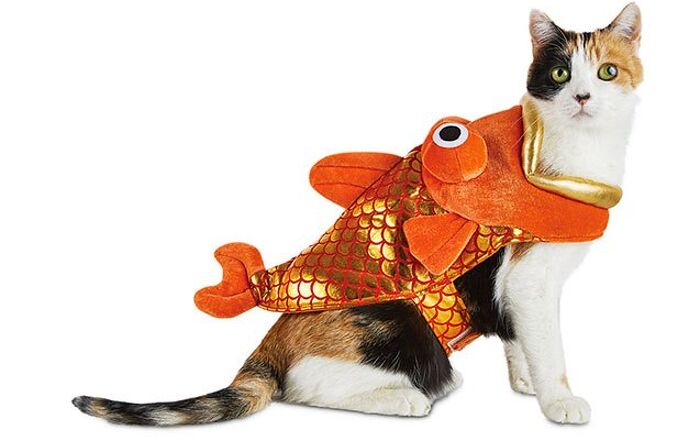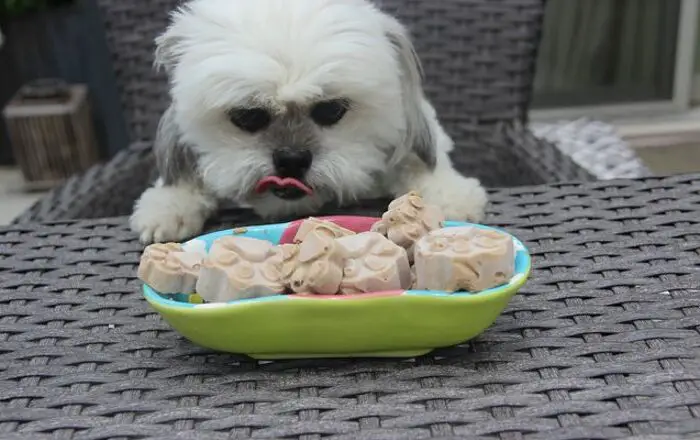
Eastern Box Turtle General Info
The Eastern Box Turtle is attractive and often kept as a pet, but it should only be introduced into your family if you know for certain that a turtle was bred in captivity and properly cared for. You should not remove an Eastern Box Turtle from its wild habitat, as it likely will not do well in captivity.
These turtles are not the best choice for beginner turtle owners because they do require quite a bit to keep them happy and healthy.
You should not remove an Eastern Box Turtle from its wild habitat, as it likely will not do well in captivity.
Native Habitat
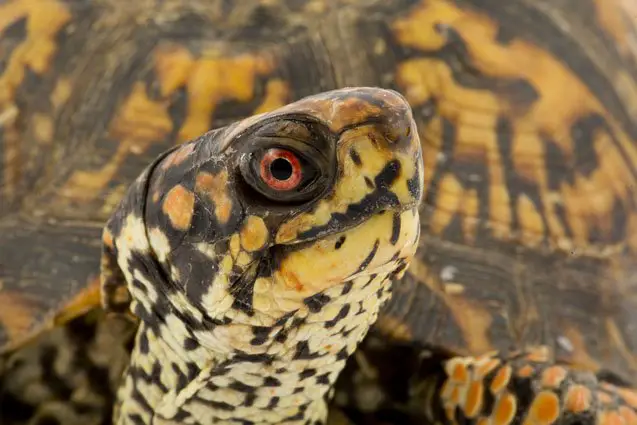
Eastern Box Turtles are often found in wild habitats from Michigan down to Tennessee, as well as east to Georgia, and they can even be found as far north as Maine.
Overall Description
No two Eastern Box Turtles will look exactly the same. However, they are identified easily, thanks to their brightly colored markings.
These turtles feature a dome-shaped, high carapace, as well as a hinged plastron and a down-turned beak.
Males and females look the same, but the males have a brighter eye color. The males will typically feature red eyes, while females will feature yellow-brown eyes.
The design and colors of Eastern Box Turtles will vary from one individual to another.
Colors
The design and colors of Eastern Box Turtles will vary from one individual to another. You will notice that some of them may be almost totally solid black or yellow, while others could have different designs that include shades of yellow, brown, black, red, and white on their shells and on their skin.
Most of the time, you will note that these turtles are olive colored or dark brown, and they will have bright yellow or orange patterns.
Environment
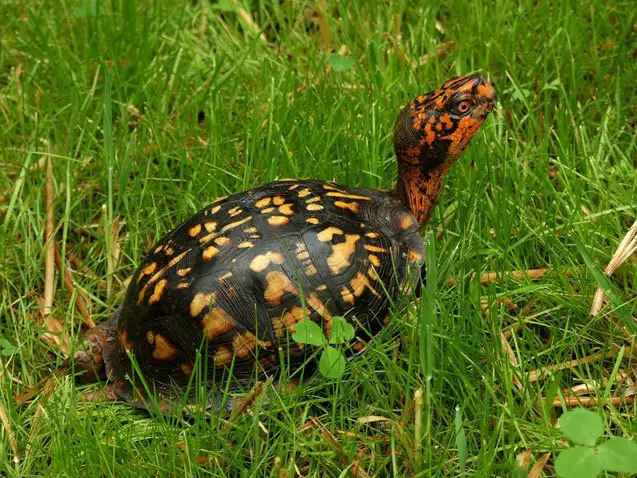
You can set up an outdoor habitat for your Eastern Box Turtle by providing him with a garden-like environment and access to water all year long. You should also provide your outdoor turtle with food and a safe place where he can hibernate in the winter. Also, the enclosure should be a minimum of 4’x4’ for an adult. Dig down at least 6” below the bottom of the walls of the enclosure in order to provide a safe barrier that will prevent your Eastern Box Turtle from escaping. You can also use bricks or chicken wire, along with a screen top, to protect your turtle from predators.
Your outdoor enclosure should have plants and shrubs for shade, as well as plant pots that have been turned on their sides, hollowed out logs, and other safe materials that can be utilized for hiding when necessary.
If you are going to keep your turtle indoors, the enclosure’s size should be at least 48”x24”x15”. To keep your turtle safe, the walls should be 15” high for a single turtle. Avoid the use of a glass tank.
Daytime air temperature for your Eastern Box Turtle’s enclosure should be set at 75-85°F, while the basking area should be set at 85-90°F (there should be a warmer side and a cooler side in the turtle’s enclosure). Humidity should remain anywhere from 60-80%. To maintain an enclosure’s humidity, mist it regularly.
There should also be plenty of substrate that is deep enough (usually at least 3” deep) for your pet to burrow into it. You can use potting soil or a coir and peat moss mix. Keep the substrate moist, but not wet, as this will help with humidity.
There should be a water bowl, too, and it should be large so that your turtle can climb into it and out of it with ease, as well as turn around in it comfortably. Clean the water bowl at least once a day.
Be sure to provide a few hiding places at either end of the turtle’s enclosure. UVB lighting is also necessary, or you can provide your pet with access to sunshine. If you have an outdoor turtle, you should allow it get sunshine in the morning and in the late afternoon when your pet is likely to be the most active.
Eastern Box Turtles are beautiful to look at, but don’t like being handled.
Care Requirements
Eastern Box Turtles can eat a varied diet of insects, plants, snails, and worms. You can also give them treats that include the rinds of cantaloupe and watermelon, along with fresh vegetables and fruits, such as squash, blueberries, carrots, blackberries, kale, dandelion leaves, strawberries, tomatoes, endive, mulberries, and pumpkin.
Choose pesticide-free vegetables and fruits. Dice them finely and mix them together. When providing insects, such as wax worms, grasshoppers, crickets, slugs, red worms, and earthworms, lightly dust them with a calcium powder that is free of phosphorus. Offer the insects at every other meal. You can also give your turtle a multivitamin/mineral supplement weekly.
Offer the food on a flat rock or on a plastic lid so that your pet will not eat the substrate in his enclosure.
Behavior
Eastern Box Turtles are beautiful to look at, but they are not the ideal choice if you are hoping to have a turtle that will enjoy being handled. It’s also recommended that children not handle these turtles.
If you are going to have more than one Eastern Box Turtle, it is best to not put more than one male together because dominant males will fight. Females should not be introduced unless you plan on breeding them.
Photo credit: dndavis/Bigstock; mithtastica/Bigstock; RedDrgn/Bigstock



